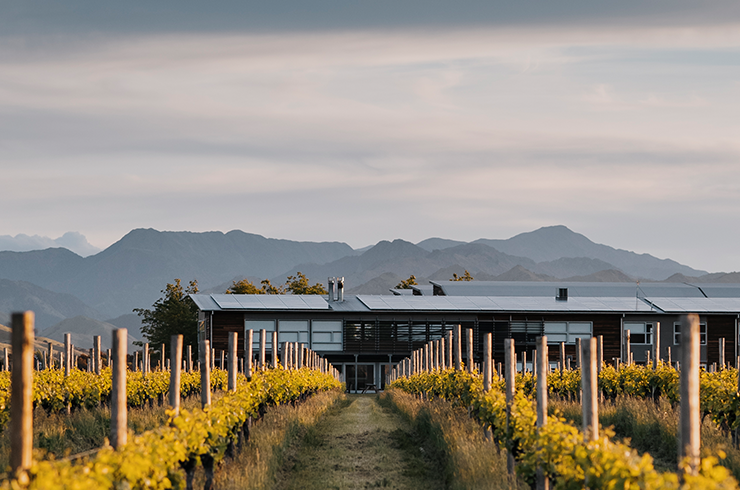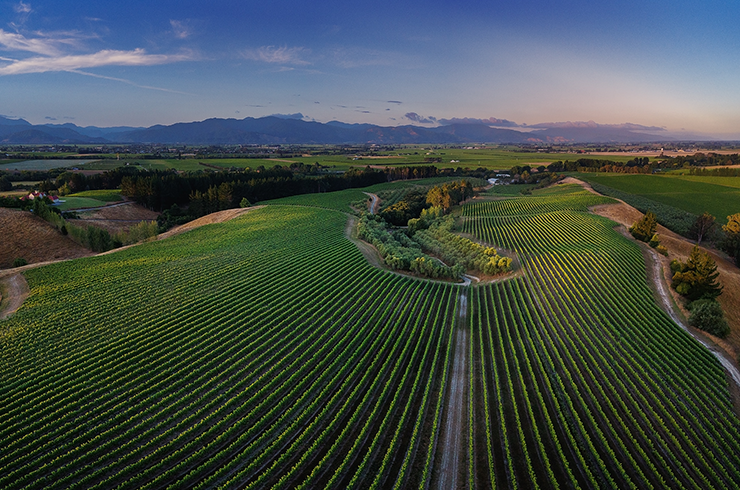The name Rudy Kurniawan will ring a bell for many, with his story of ripping off thousands of rare bottles made famous by the documentary Sour Grapes. Rudy – aka “Dr Conti” (thanks to his penchant for reproducing Domaine de la Romanee-Conti), the biggest wine forger of the 21st century – brought the issue of counterfeits into the spotlight. But his case only illuminates one part of a complex problem.
Defining wine fraud
According to Master of Wine Alison Eisermann Ctercteko, who is training
with US wine-fraud expert Maureen Downey, there are several ways
to fake wine. The most common is the one Rudy’s story highlights,
which is copying expensive labels to put onto cheap wines, or using
rare-old bottles and replacing their contents with doctored or
inferior styles. The more deceptive side of the issue is bulking up the moderately priced wine market with cheaper products. Then there
is plagiarism, with the look of a label taken and slightly tweaked
to trick drinkers into buying a copycat wine (“Benfolds”, a Chinese
rip-off of Penfolds, is one example).
A global epidemic
Thanks to the prolific work of Rudy and others like him, there
is an estimated 20,000 bottles of counterfeit wine still in
circulation. The problem isn’t exclusive to wine either, with
whisky another affected category. Imitations extend to food
as well, with one example being the fake honey scandal
that saw brands bulking up products with sugar syrups and
falsifying geographic origins. So, how can you be sure what
you’re buying is the real deal?
Spotting a fake
The first thing to check, according to Alison, is the label of
a wine bottle, ensuring it has the same fonts and paper that
the producer would usually use. And if it’s an older vintage,
check that it’s age-appropriate. “We also look at capsules
and corks to evaluate their authenticity and see if there is
evidence of tampering,” Alison says. “With wines under
cork, if the original has been put back in, you can typically see marks where it’s been neatly taken out. You’ll also notice a newer capsule than a bottle should have, either
from the paint or material.”
It’s what’s on the inside that counts, too. “When it comes to old vintages, we look at the colour of the wine inside the bottle using special torches. We also look for the sediment appropriate for a wine of that age, as well as the volume of liquid. If you’ve got a wine that’s 100 years old and the level is high, that’s going to raise some suspicions – unless it’s a brand like Penfolds that has recorking clinics to top up its wines.”
Attention to detail is also integral. “A lot of instances of wine fraud have been picked up because of a vintage that was never made or a winemaker’s signature that doesn’t match up – anything that’s out of character.”
Buying wisely
Fraudulent wines most often turn up in the secondary market, private collections and among older vintage
wines. To avoid being duped, Alison says it’s best to buy
directly from wineries. Or, if you’re sourcing international
wines, seek out a reputable negociant or an importer with good relationships.
When buying via auction houses, beware of old and rare wines that don’t come with a list of provenance or past owners. Do your research and understand what the proper labelling should look like too. “The people who get swept up in wanting to collect and possess these old and rare wines are often the ones who get caught out,” Alison says. “Unfortunately, a big target is the Asian market, and a lot of the wines that have been deemed fraudulent or thought to be out of circulation appear there,” she adds. Take care with certain brands, regions and vintages, such as celebrated French regions and top-tier New World wines. “Bordeaux and Burgundy wines from 2005 have had a lot of issues with counterfeits,” Alison says. “In Australia, Grange has been a big one, not only for fraud but also copycats, with a couple of instances of the same fonts and colours being used with a slightly different name in mainland China. Henschke is another that has been targeted, although they have unique closures that will be harder to fake from now on. The top wines of Italy and the US are also ones to watch.”
New technology
There is a range of measures to combat counterfeits on the rise.
At one end of the spectrum are proprietary bottles, closures and
label papers, and at the other are high-tech initiatives involving
encryption and blockchain.
“A lot of top European wine houses are using encrypted labels, which means marking them with a DNA strip that’s unique to the bottle and the producer,” Alison says. The potential of blockchain – a means of recording data and transactions initially developed for cryptocurrencies – is being homed in on in a big way. How does it work for wine? “A tamperproof seal goes in between the cork and the capsule, or over the top of the screwcap, and the seal is scannable so the bottle can be tracked from winery to consumer. If it’s sold between collectors, again, they log that and it gets scanned to the new owner, so the whole pathway of the bottle can be followed. If this seal is intact on the bottle, then authenticity is guaranteed.” While other systems prevent labels and bottles from being copied, this approach stops the bottle’s contents from being removed, so you’re guaranteed to get the wine you’re buying. There are a couple of people around the world working on this technology, including local winemakers Jeffrey Grosset and David Travers, who recently won a grant to develop it here in Australia.
Their concept is unique in that it provides people with an immediate way to learn about a wine’s journey by scanning a QR code on the label. This brings Jeff full circle by evolving the screwcap technology he spearheaded nearly 20 years ago. “With 95 per cent of Australian wines now under screwcap and every bottle maturing at the same rate, and with no chance of taint, we are at an advantage. By dealing with the flawed closure that is cork, we were trying to deal with an issue of authenticity and integrity, and, of course, this comes right back to those same themes,” he says.
Jeff also believes it’s pertinent to protect the image and reputation of Australian wine overseas. “Australian wine exports are booming. It’s a $2.8-billion industry with $1.7 billion coming from South Australia, and our main customer is China. Internationally, the issue is trust. There’s no evidence of the lack of fraudulent wine in Australia, so when we’re in an international market, we can’t reassure people of the integrity of Australian wine. That’s what we want to do with this technology – pre-empt the issue that we may well be facing,” he explains.
Looking ahead
Until now, the biggest hits have been to those super-premium
wines with the history to produce rarity and a sought-after style, such as Bordeaux and Burgundy. Eventually, however, a more mainstream problem could emerge. “Currently, the biggest
issue is the counterfeiting of rare and old wines because of the
exorbitant prices people pay for them, but those will eventually
disappear from the market, and we’ll have the technology to
protect future batches coming through,” Alison says.
“The next battle will be with bottom-end wines being mixed in
with higher-end products or labelled incorrectly. For example,
what’s happening in Europe where low-end rosé out of Spain
is being sold with Italian labels or cheap bubbly with prosecco
labels, and there are so many brands of rosé and prosecco
out there that drinkers wouldn’t be aware they’re getting an
inferior product. So mid-price wine fraud could be the more
problematic issue moving forward.”
This article first appeared in issue #46 of Halliday magazine.



